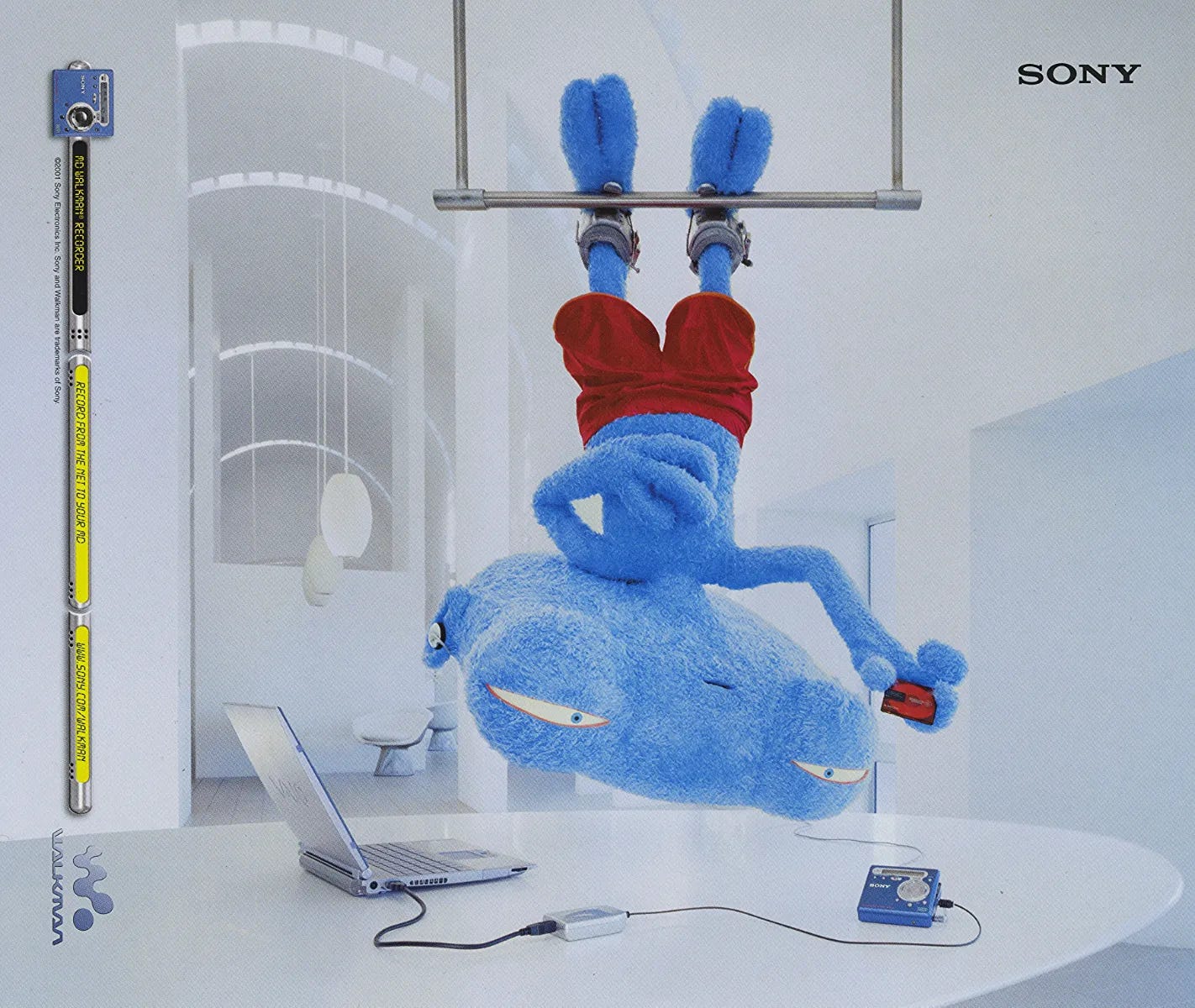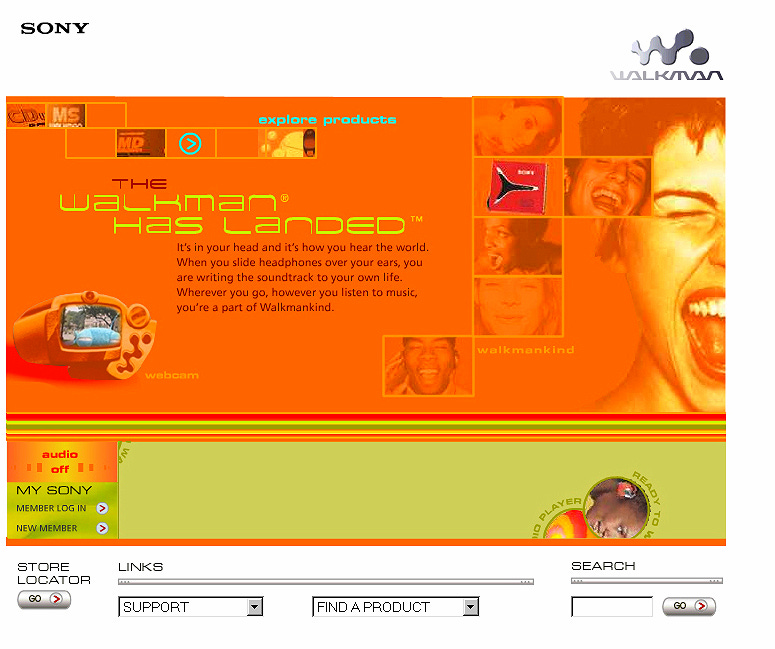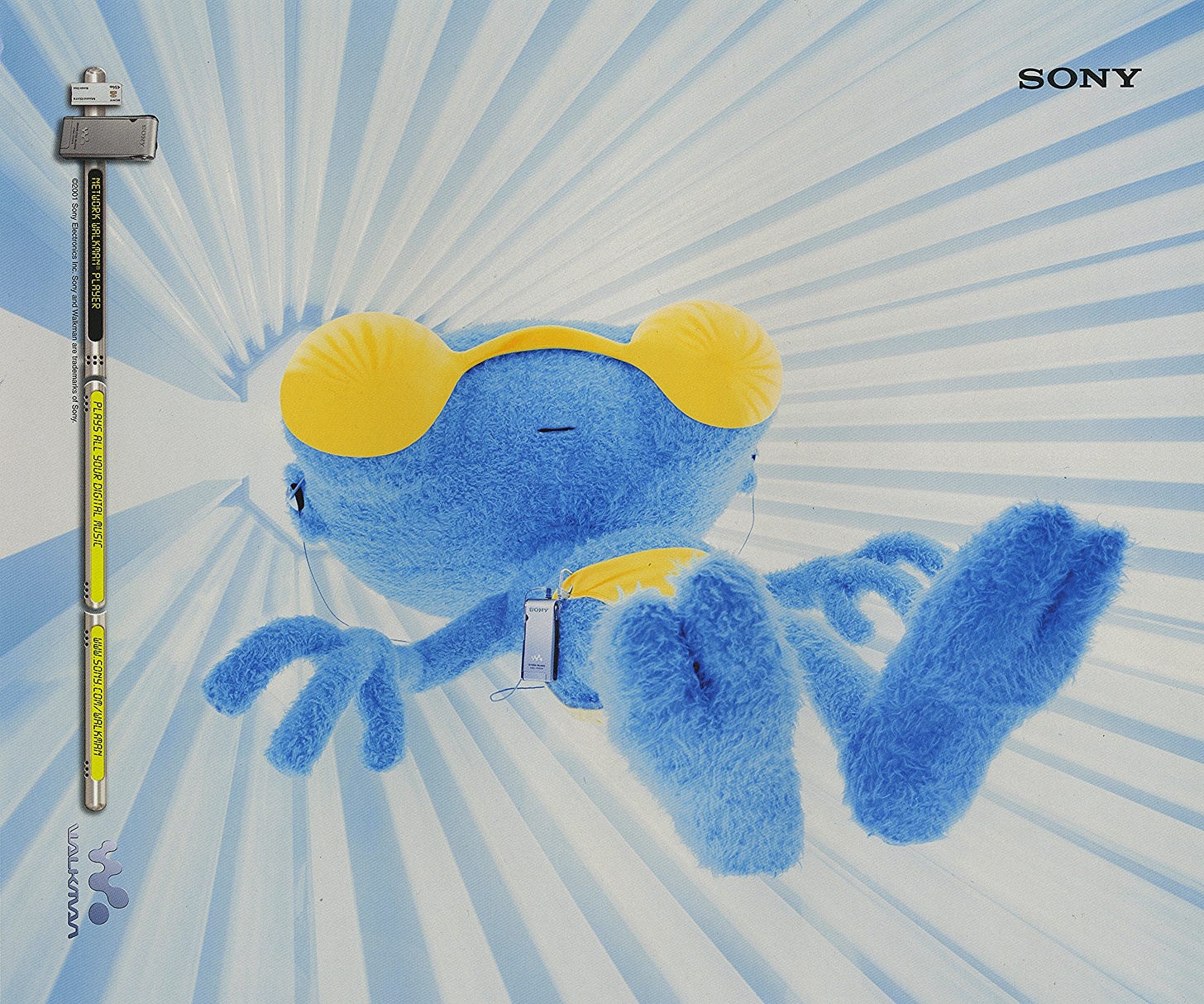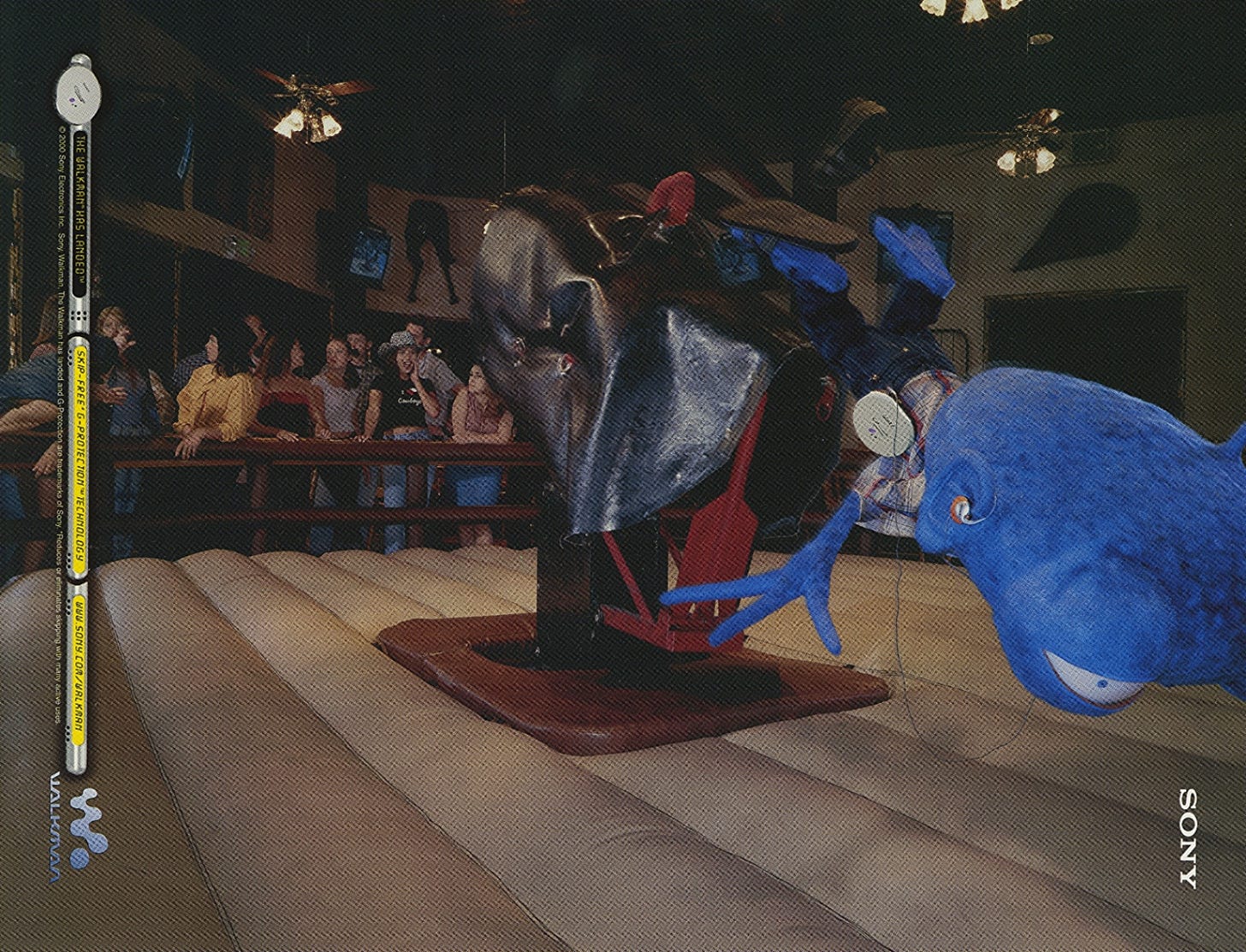Just one year before Apple launched the iPod and its iconic dancing silhouettes, an ad campaign that would define a generation, Sony tried to stage its own comeback.
Desperate to revive the Walkman brand and push its struggling MiniDisc format in the U.S., the company launched one of its strangest marketing campaigns ever. At the center was Plato, a fuzzy blue alien with a blank stare who somehow became the $30 million face of Sony’s last big swing in portable audio.
He didn’t talk. He wasn’t famous. He just vibed. Plato lounged on college lawns, ripped tracks from a laptop while hanging upside down, rode mechanical bulls, and let dogs chew on his Walkman. Part Muppet, part fever dream, he was Sony’s weirdest attempt to stay relevant.
Most people didn’t notice. And the few who did forgot quickly.
But for those who remember, Plato was the oddball face of a billion-dollar brand drifting further and further from Earth.
By the early 2000s, Sony had a problem. The Walkman, once synonymous with portable music, was falling out of fashion. MiniDisc had done well in Japan but never caught on in the U.S. MP3 players, CD-Rs, and downloads were rapidly replacing physical media, and Sony found itself stuck between outdated hardware and a changing world.
Instead of fully pivoting to flash-based players, which were already part of the lineup, Sony doubled down on MiniDisc. The hardware was sleek, durable, and arguably sounded better than early MP3 players. But it needed a hook. Something that could connect with a younger audience.
So they gave us Plato.
Sony’s U.S. ad agency, Young & Rubicam, rolled out a fresh campaign to reposition the Walkman brand. That included CD Walkmans, Network Walkmans, and especially the MD Walkman. The idea was to make it feel fun, youthful, and futuristic. They called it “The Walkman Has Landed.”
Plato was the centerpiece of the entire campaign, showing up in TV commercials, magazine spreads, and in-store displays as Sony’s oddball attempt at a new face of cool. With his fuzzy blue skin, blank stare, and awkward puppet-like movements, he wasn’t exactly aspirational. He was just confusing. Instead of making the Walkman feel fresh or exciting, Plato left people scratching their heads. The campaign tried to lean into his weirdness, but the result felt more surreal than effective, and it was hard for audiences to connect with what Sony was actually trying to sell.
The commercials were strange.
In one, Plato landed a fish-shaped spaceship on a college campus while listening to Cypress Hill on the NW-MS7, Sony’s first Digital Walkman. Students stared while a few girls looked intrigued. Plato didn’t react. He was too deep into the music.
Another commercial showed him being thrown off a mechanical bull while his Walkman kept playing. That was a nod to Sony’s G-Protection anti-skip tech. In another ad, he laid in the grass while a dog chewed on his device. The message was simple: the CD Walkman could take whatever life threw at it.
Other ads just showed him listening to music and syncing files. He carried a laptop, a Walkman, and a vague sense of apathy.
Sony claimed Plato represented the Walkman spirit: personal, portable, and playful. He was an outsider. A blank canvas. Someone you could project yourself onto.
But the truth was more complicated.
By the time Plato arrived, MiniDisc was already on its way out in the U.S. Americans had moved on. Sony needed to reposition MiniDisc as forward-thinking and essential. Instead, they offered up a character no one could relate to.
Critics were confused. Adweek called the campaign quirky. New York Magazine dismissed him as a substandard Muppet.
The ads looked good, with a sleek and creative style, but they failed to drive sales. And Apple was just about to change everything with the iPod.
Plato didn’t stand a chance.
By 2002, Plato quietly disappeared from Sony’s marketing as the company dropped the character and moved the Walkman brand in a different direction. He was never mentioned again.
He became a strange artifact from a strange time. A symbol of Sony’s internal conflict as the world moved faster than the company could adapt.
And yet, there’s something likable about Plato. He wasn’t flashy or attention-seeking. He drifted through the noise without trying to stand out, which in a way made him the perfect MiniDisc mascot. Smart, futuristic, but completely out of sync with the world around him.
Unlock more of Sony’s history!
Hit the like button, drop a comment, and consider becoming a paid subscriber. You’ll get early access, exclusive content, and help support more stories like this.










Design and advertising was wild in that time.
That Cypress Hill ad goes so hard. Holds up better than Apple’s ridiculous silhouettes.